Урок полиязычие; Плоские черви
Урок полиязычие; Плоские черви
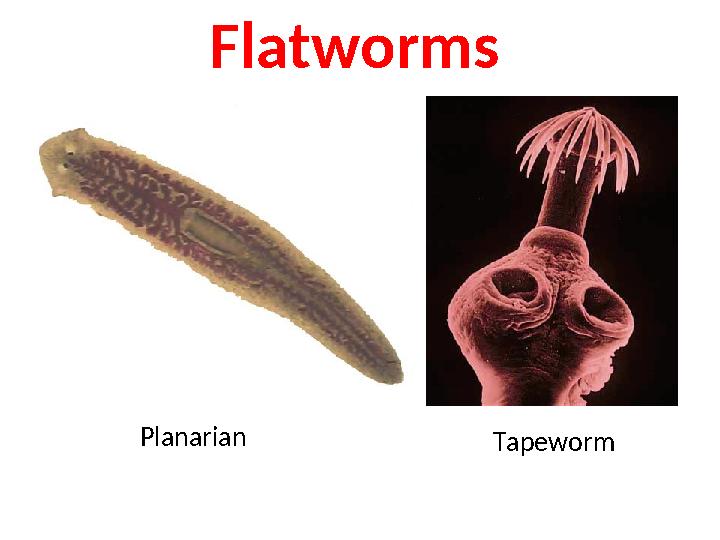

#1 слайд
Flatworms
Planarian Tapeworm
1 слайд
Flatworms Planarian Tapeworm
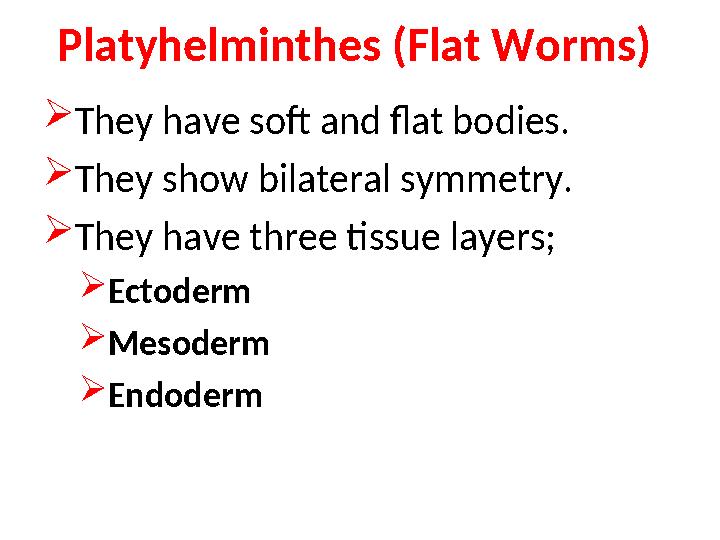
#2 слайд
They have soft and flat bodies.
They show bilateral symmetry.
They have three tissue layers;
Ectoderm
Mesoderm
Endoderm
Platyhelminthes (Flat Worms)
2 слайд
They have soft and flat bodies. They show bilateral symmetry. They have three tissue layers; Ectoderm Mesoderm Endoderm Platyhelminthes (Flat Worms)
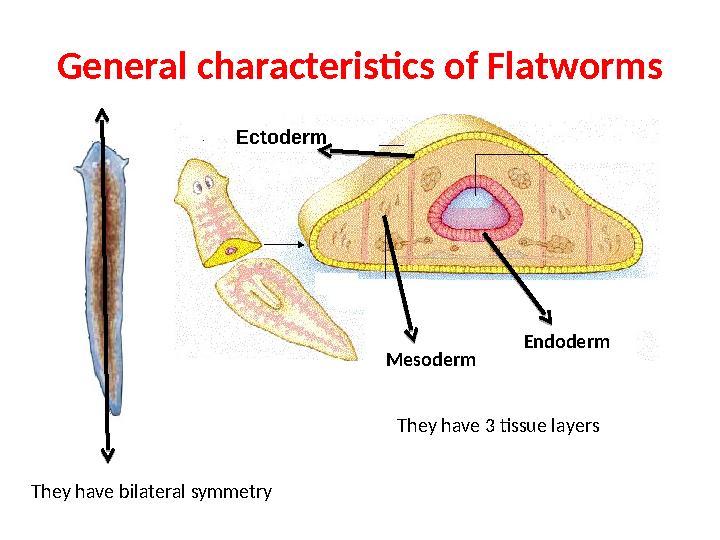
#3 слайд
General characteristics of Flatworms
They have bilateral symmetry
Mesoderm
Endoderm
They have 3 tissue layers
Ectoderm
3 слайд
General characteristics of Flatworms They have bilateral symmetry Mesoderm Endoderm They have 3 tissue layers Ectoderm
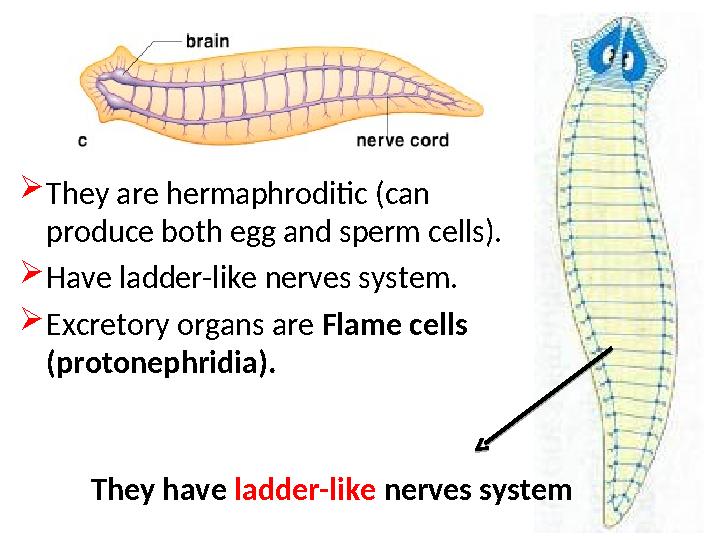
#4 слайд
They are hermaphroditic (can
produce both egg and sperm cells).
Have ladder-like nerves system.
Excretory organs are Flame cells
(protonephridia).
They have ladder-like nerves system
4 слайд
They are hermaphroditic (can produce both egg and sperm cells). Have ladder-like nerves system. Excretory organs are Flame cells (protonephridia). They have ladder-like nerves system
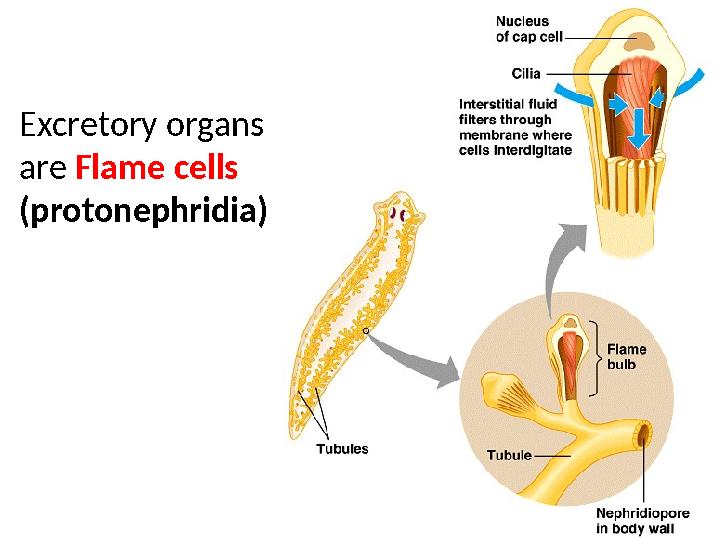
#5 слайд
Excretory organs
are Flame cells
(protonephridia)
5 слайд
Excretory organs are Flame cells (protonephridia)

#6 слайд
Types of Flatworms
1.Turbellaria
Ex: Planarian
2. Trematoda
Ex: Flukes
3. Cestoda
Ex:
Tapeworm
6 слайд
Types of Flatworms 1.Turbellaria Ex: Planarian 2. Trematoda Ex: Flukes 3. Cestoda Ex: Tapeworm

#7 слайд
1. Turbellaria: Characteristics of Planarian
Planaria is the most important example.
Mostly live in fresh water.
Have two eye spots.
Have only one opening at the centre serve as
mouth and anus.
The ability of regeneration is high.
7 слайд
1. Turbellaria: Characteristics of Planarian Planaria is the most important example. Mostly live in fresh water. Have two eye spots. Have only one opening at the centre serve as mouth and anus. The ability of regeneration is high.

#8 слайд
Planarian
8 слайд
Planarian
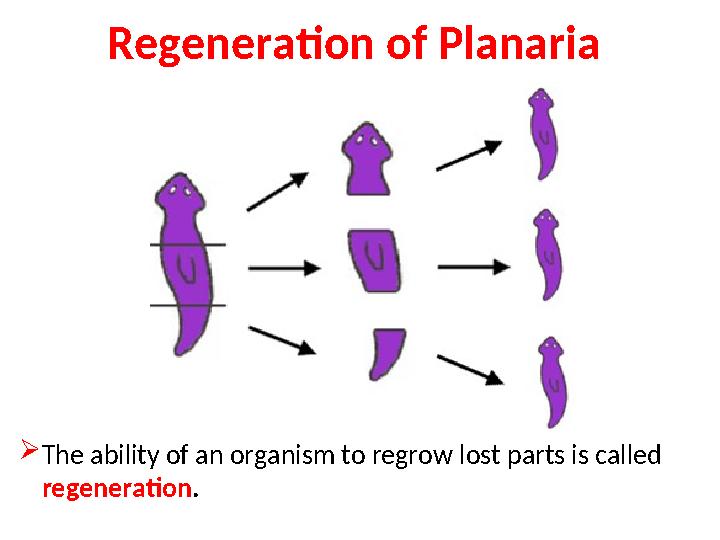
#9 слайд
Regeneration of Planaria
The ability of an organism to regrow lost parts is called
regeneration.
9 слайд
Regeneration of Planaria The ability of an organism to regrow lost parts is called regeneration.
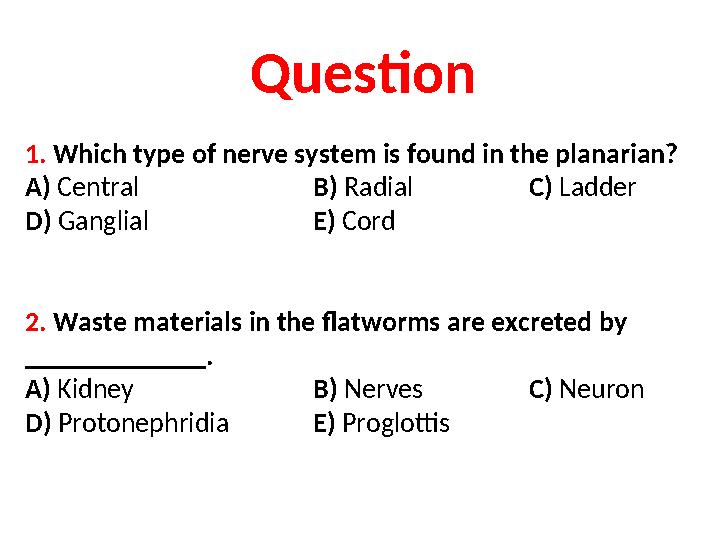
#10 слайд
Question
1. Which type of nerve system is found in the planarian?
A) Central B) Radial C) Ladder
D) Ganglial E) Cord
2. Waste materials in the flatworms are excreted by
_____________.
A) Kidney B) Nerves C) Neuron
D) Protonephridia E) Proglottis
10 слайд
Question 1. Which type of nerve system is found in the planarian? A) Central B) Radial C) Ladder D) Ganglial E) Cord 2. Waste materials in the flatworms are excreted by _____________. A) Kidney B) Nerves C) Neuron D) Protonephridia E) Proglottis
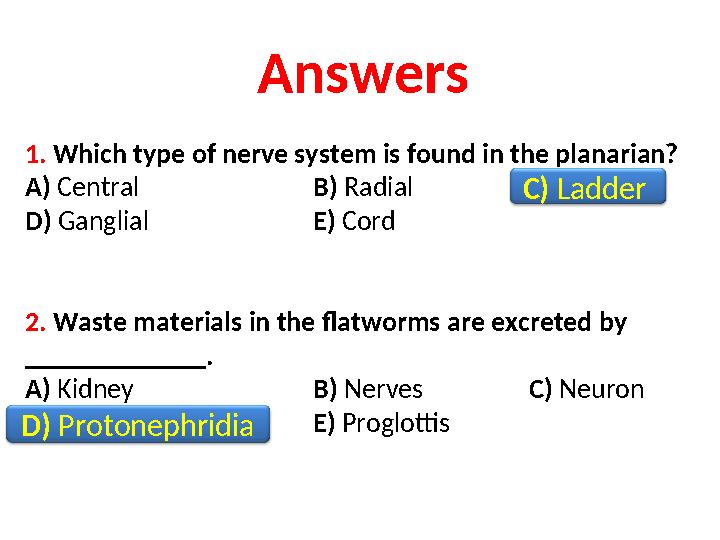
#11 слайд
Answers
1. Which type of nerve system is found in the planarian?
A) Central B) Radial C) Ladder
D) Ganglial E) Cord
2. Waste materials in the flatworms are excreted by
_____________.
A) Kidney B) Nerves C) Neuron
D) Protonephridia E) Proglottis
C) Ladder
D) Protonephridia
11 слайд
Answers 1. Which type of nerve system is found in the planarian? A) Central B) Radial C) Ladder D) Ganglial E) Cord 2. Waste materials in the flatworms are excreted by _____________. A) Kidney B) Nerves C) Neuron D) Protonephridia E) Proglottis C) Ladder D) Protonephridia

#12 слайд
Question: Label the body parts of Planaria
12 слайд
Question: Label the body parts of Planaria
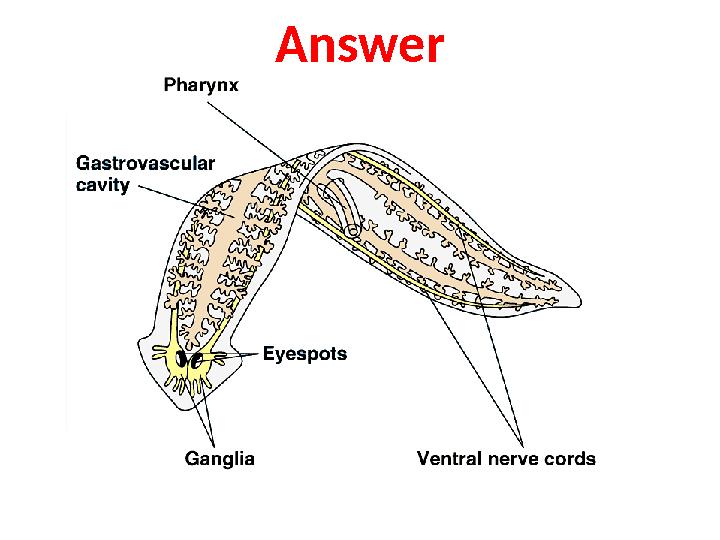
#13 слайд
Answer
13 слайд
Answer
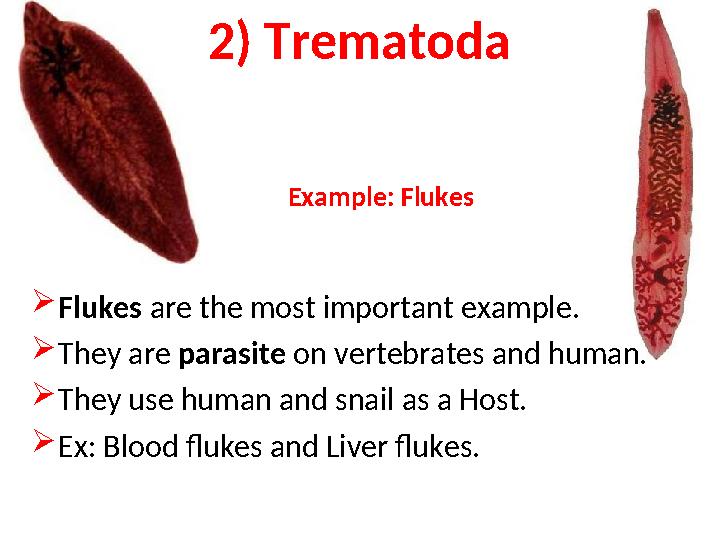
#14 слайд
2) Trematoda
Example: Flukes
Flukes are the most important example.
They are parasite on vertebrates and human.
They use human and snail as a Host.
Ex: Blood flukes and Liver flukes.
14 слайд
2) Trematoda Example: Flukes Flukes are the most important example. They are parasite on vertebrates and human. They use human and snail as a Host. Ex: Blood flukes and Liver flukes.
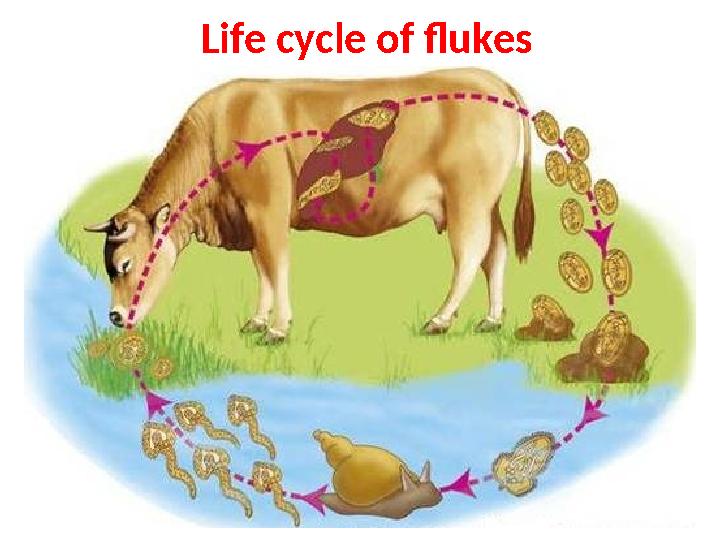
#15 слайд
Life cycle of flukes
15 слайд
Life cycle of flukes
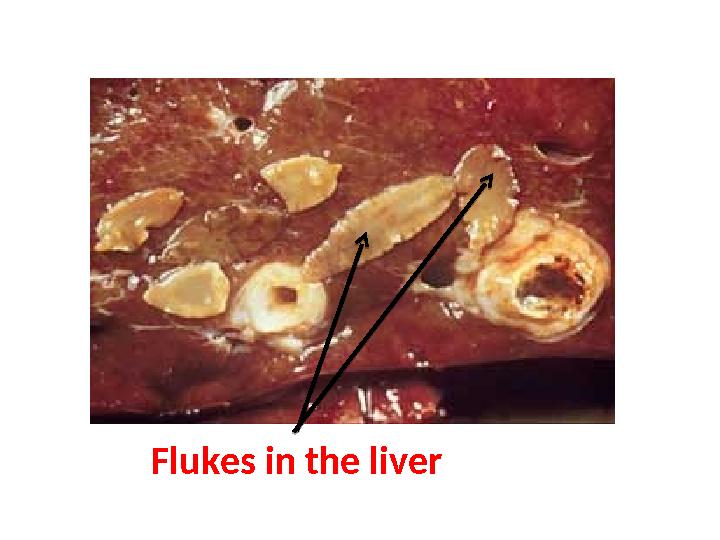
#16 слайд
Flukes in the liver
16 слайд
Flukes in the liver

#17 слайд
3. Cestoda: Tapeworms
Tapeworms are the most important example.
They are parasite on vertebrates and human.
Have 2 body part Scolex (head) and Proglottis
(all body segments).
Have hooks and suckers on their scolex to
attach the host.
17 слайд
3. Cestoda: Tapeworms Tapeworms are the most important example. They are parasite on vertebrates and human. Have 2 body part Scolex (head) and Proglottis (all body segments). Have hooks and suckers on their scolex to attach the host.

#18 слайд
Body parts of Tapeworm
18 слайд
Body parts of Tapeworm

#19 слайд
Scolex
Have no digestive system but have well developed
reproductive system (1 million egg in a day).
Ex: pork, beef, dog and fish tapeworm.
They have hooks and suckers on their Scolex to
attach the host.
19 слайд
Scolex Have no digestive system but have well developed reproductive system (1 million egg in a day). Ex: pork, beef, dog and fish tapeworm. They have hooks and suckers on their Scolex to attach the host.
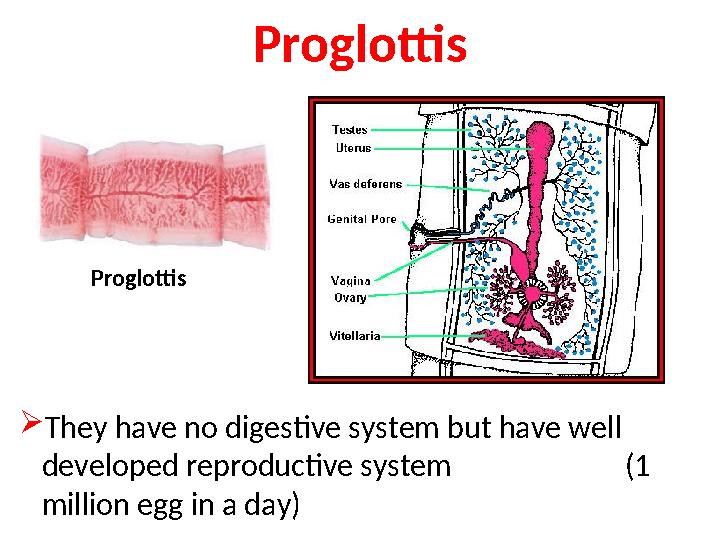
#20 слайд
Proglottis
They have no digestive system but have well
developed reproductive system (1
million egg in a day)
Proglottis
20 слайд
Proglottis They have no digestive system but have well developed reproductive system (1 million egg in a day) Proglottis
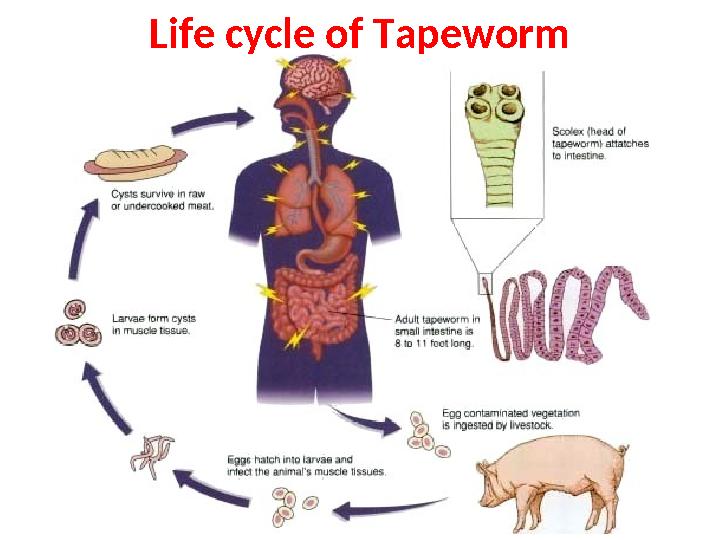
#21 слайд
Life cycle of Tapeworm
21 слайд
Life cycle of Tapeworm
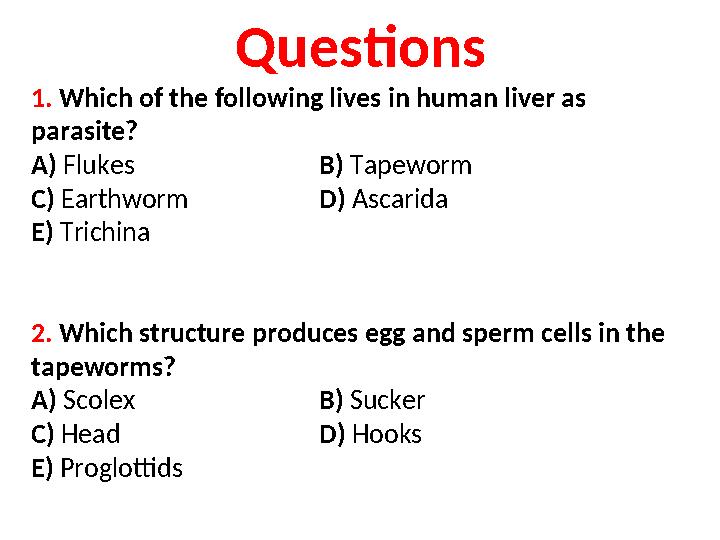
#22 слайд
Questions
1. Which of the following lives in human liver as
parasite?
A) Flukes B) Tapeworm
C) Earthworm D) Ascarida
E) Trichina
2. Which structure produces egg and sperm cells in the
tapeworms?
A) Scolex B) Sucker
C) Head D) Hooks
E) Proglottids
22 слайд
Questions 1. Which of the following lives in human liver as parasite? A) Flukes B) Tapeworm C) Earthworm D) Ascarida E) Trichina 2. Which structure produces egg and sperm cells in the tapeworms? A) Scolex B) Sucker C) Head D) Hooks E) Proglottids

#23 слайд
Answers
1. Which of the following lives in human liver as
parasite?
A) Flukes B) Tapeworm
C) Earthworm D) Ascarida
E) Trichina
2. Which structure produces egg and sperm cells in the
tapeworms?
A) Scolex B) Sucker
C) Head D) Hooks
E) Proglottids
A) Flukes
E) Proglottids
23 слайд
Answers 1. Which of the following lives in human liver as parasite? A) Flukes B) Tapeworm C) Earthworm D) Ascarida E) Trichina 2. Which structure produces egg and sperm cells in the tapeworms? A) Scolex B) Sucker C) Head D) Hooks E) Proglottids A) Flukes E) Proglottids

шағым қалдыра аласыз
















